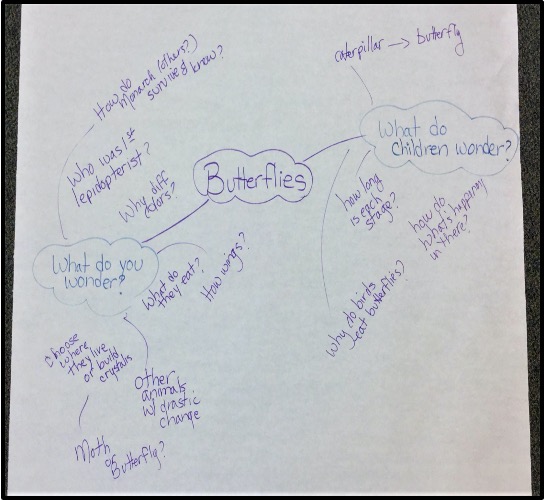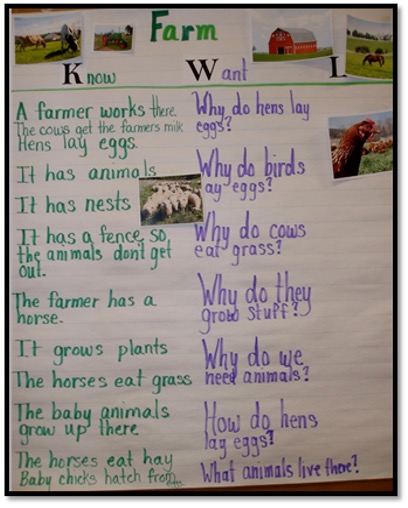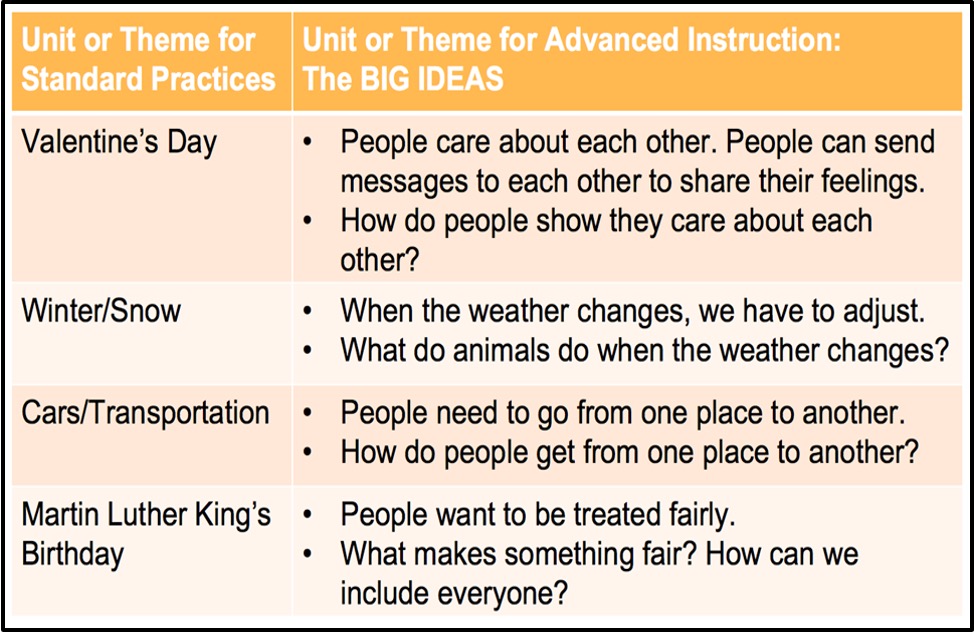Surfacing the Big Ideas: A Pathway to Meaningful Vocabulary
Topics of investigation emerge from a variety of sources – children’s interests and discoveries, observations and happenings in the world around us, teacher passions, and curriculum guides and frameworks. Determining the Big Idea, and thus the initial direction of a particular curriculum, is most effective when it is based on observed and discussed wonderings. This might be done through the development of a concept and question map and/or through the first stages of a K-W-L chart. The KWL chart helps surface what children already know about a topic (content and vocabulary) followed by what they are curious about-what they want to learn.


After spending some time surfacing prior knowledge and setting the stage through read-alouds, discussion and hands on exploration, solicit children’s questions and inquiry interests. This will help build curiosity and identify the Big Idea.
What are BIG IDEAS?
- Big Ideas can be framed as statements or questions.
- Big Ideas should be able to be applied to multiple content areas.
- Big Ideas should be engaging and support sustained and deep knowledge building.
- Big Ideas should provoke thinking and more questions.
- Big Ideas are abstract enough to promote further inquiry, and concrete enough to ground a study in.
- Big Ideas are relevant to children’s interests, and support their curiosity of the world beyond school and home.
- Big Ideas provide a contextual focus for connecting ideas and learning, shifting our work from standard past practices to concept and meaning-based learning.
